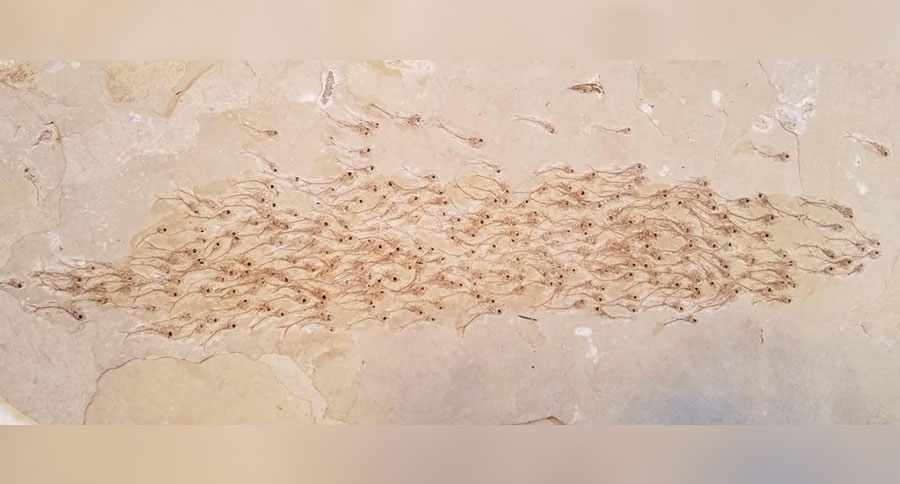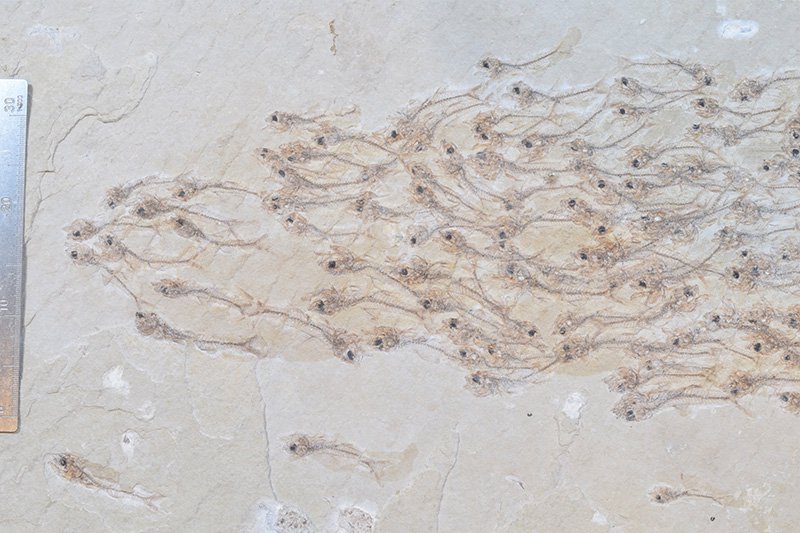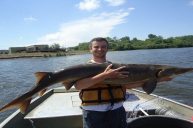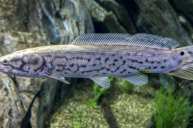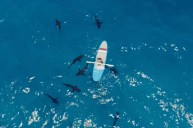Feast your eyes on some of the oldest fish fossils found in North America.
A school of more than 250 extinct fish specimens was killed and subsequently discovered as a unique limestone fossil, according to researchers and a new study from Arizona State University and Mizuta Memorial Museum in Japan.
The school of fish was discovered in the Green River Formation, a fossil hotbed located in western Colorado, eastern Utah and southwestern Wyoming. The find inspired intensive studying, and these 259 individual Erismatopterus levatus are helping prove that fish grouped together in schools as far back as 50 million years. This particular extinct species lived in the Green River area during the Eocene period, a full 56 to 34 million years ago.
The fossil shows the fish swimming in the same direction, tightly bunched and likely working together.
All of the fish supposedly died at the same time, and the ones that created the fossilized slab of limestone were juveniles. Nonetheless, the researchers measured their size (most of the tiny fish were smaller than 20 millimeters), mapped their positioning, and were able to run simulations on the shoal's movement.
The running hypothesis is that a sand dune fell and crushed the entirety of the swimming school simultaneously.
The idea that fish have been schooling, likely as a way to protect the group from predation, had yet to be technically proven, but this will go a long way in providing insight to the way of life these species experienced.
Th incredible fossil discovery might even help anglers in pursuit of game fish, confirming the idea that fish schools can trigger a lot of reaction from larger predators. Perhaps it's something you already know, but scientific confirmation can be beneficial.
Seeing that an entire school of fish was swimming around in prehistoric water bodies, much like modern fish do today, is pretty cool to imagine.
NEXT: SOMEONE IS ALLEGEDLY BRANDING SHARKS IN SOUTH CAROLINA
WATCH
